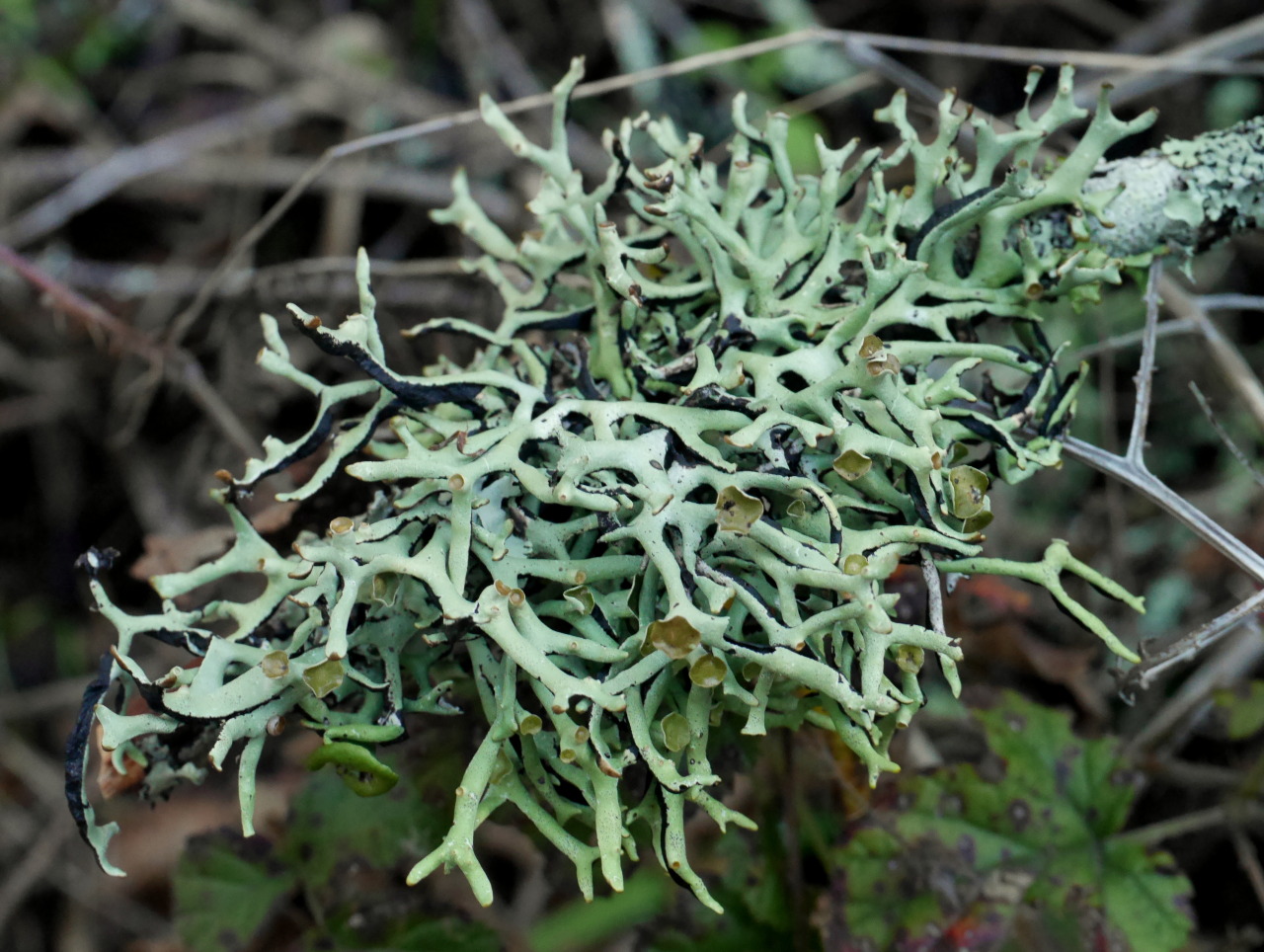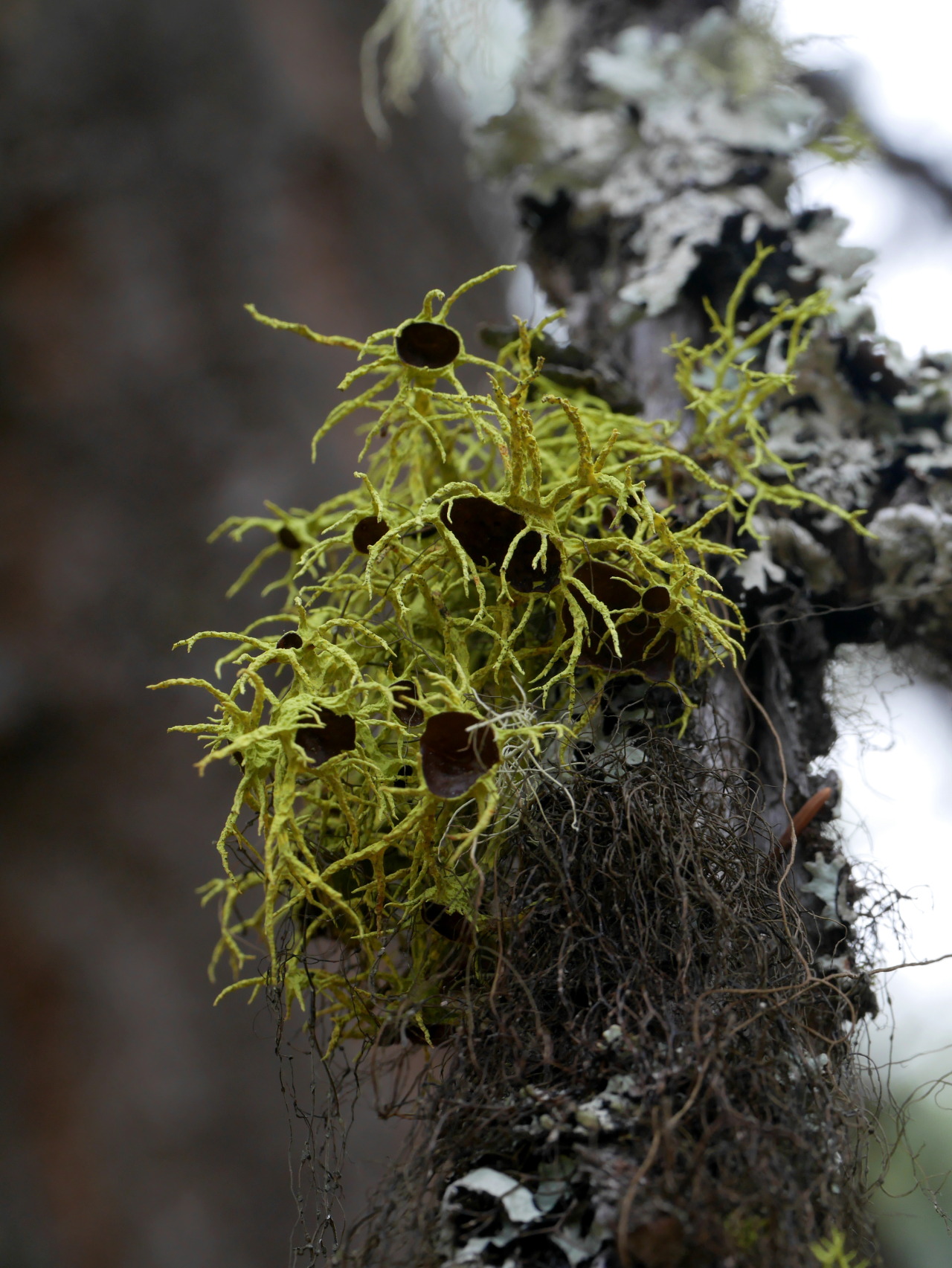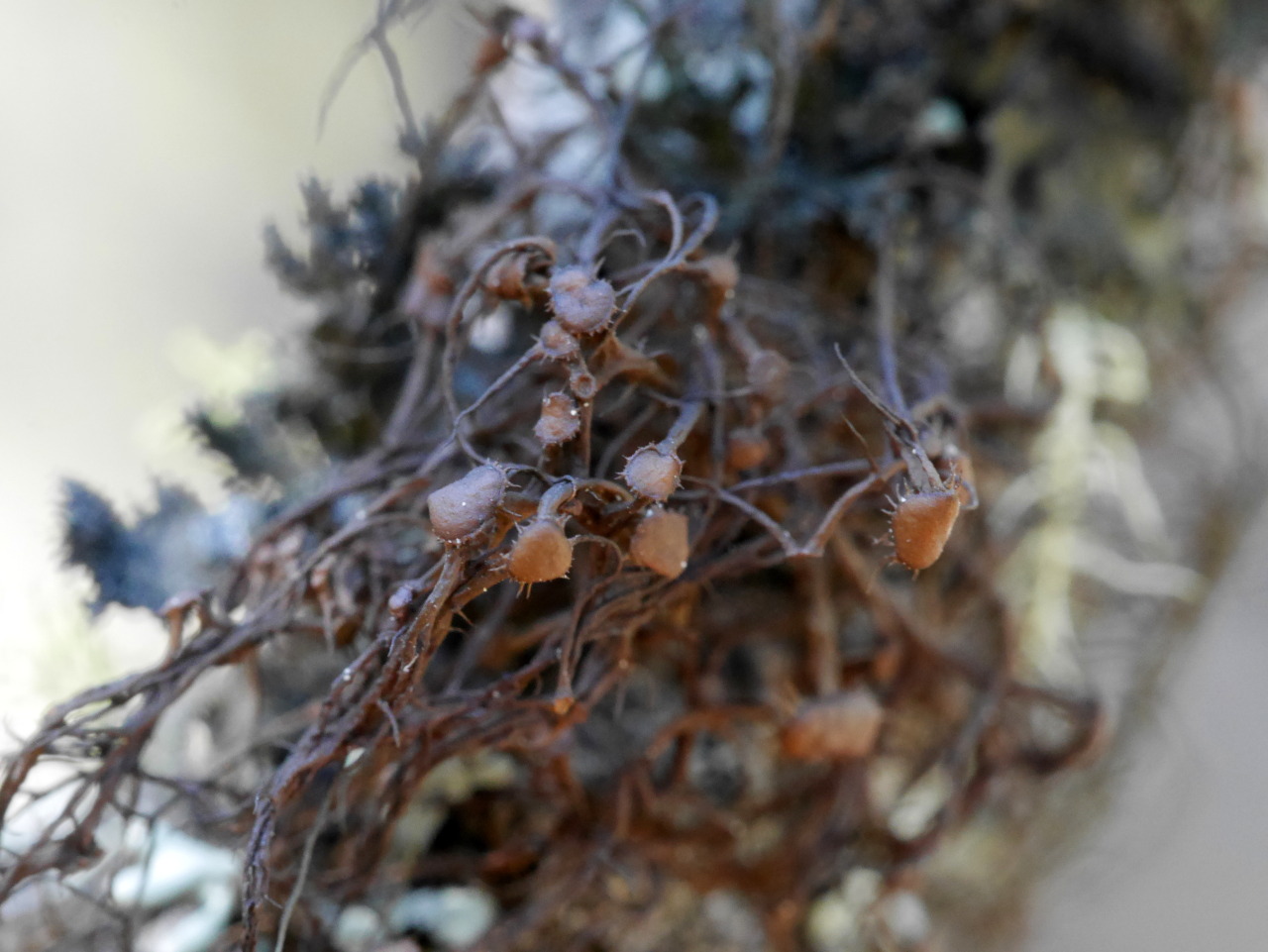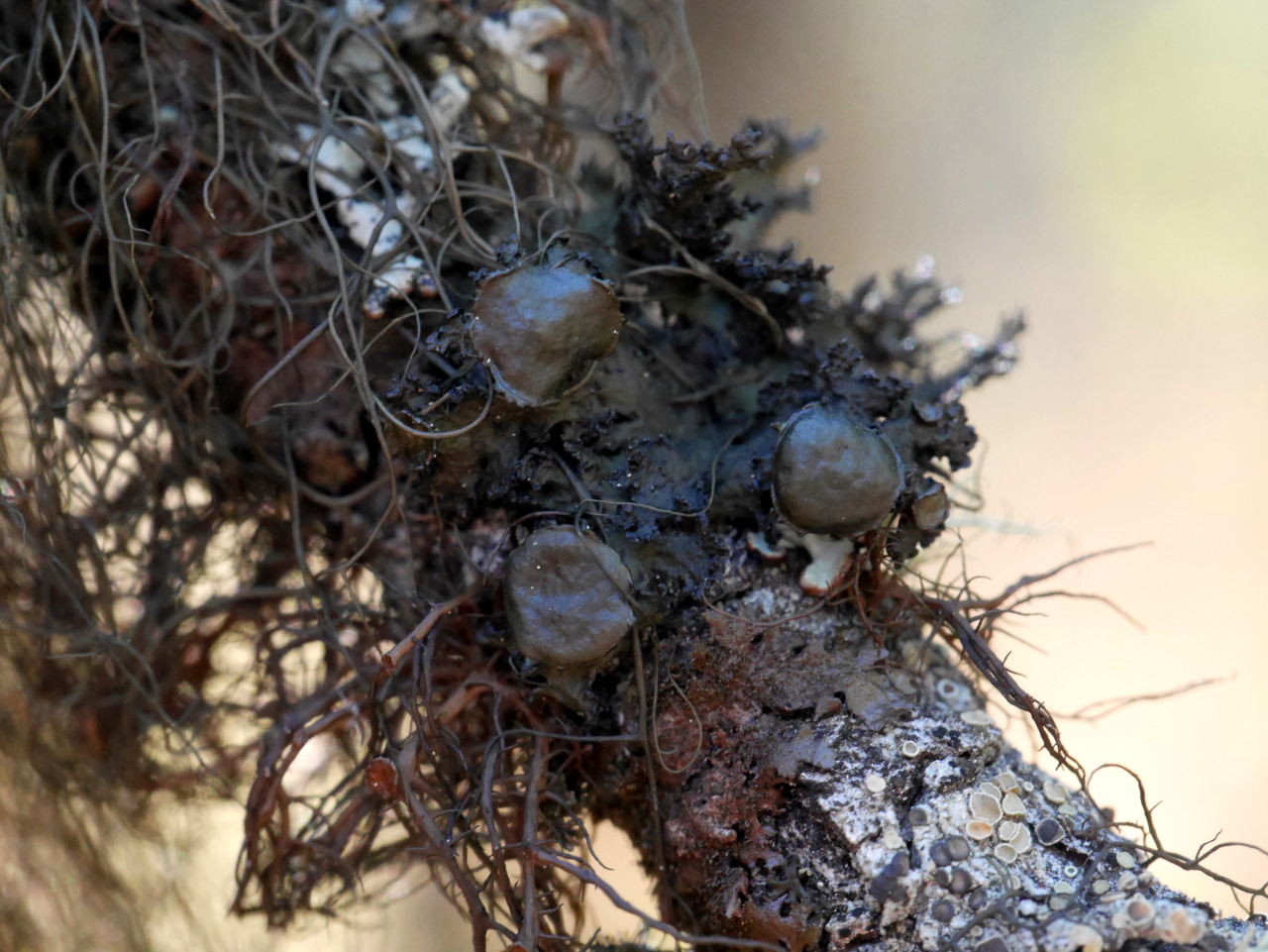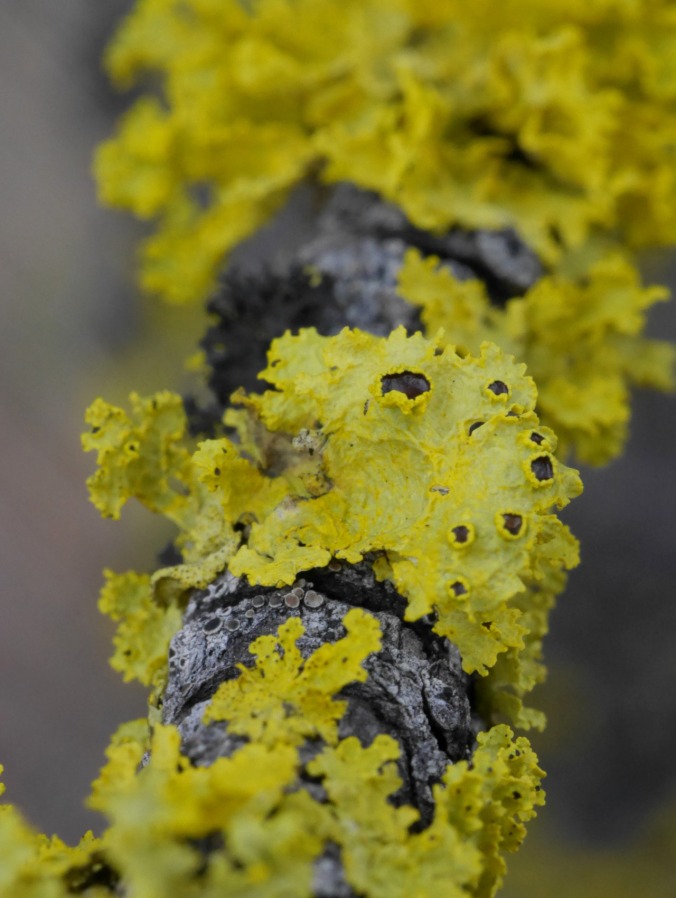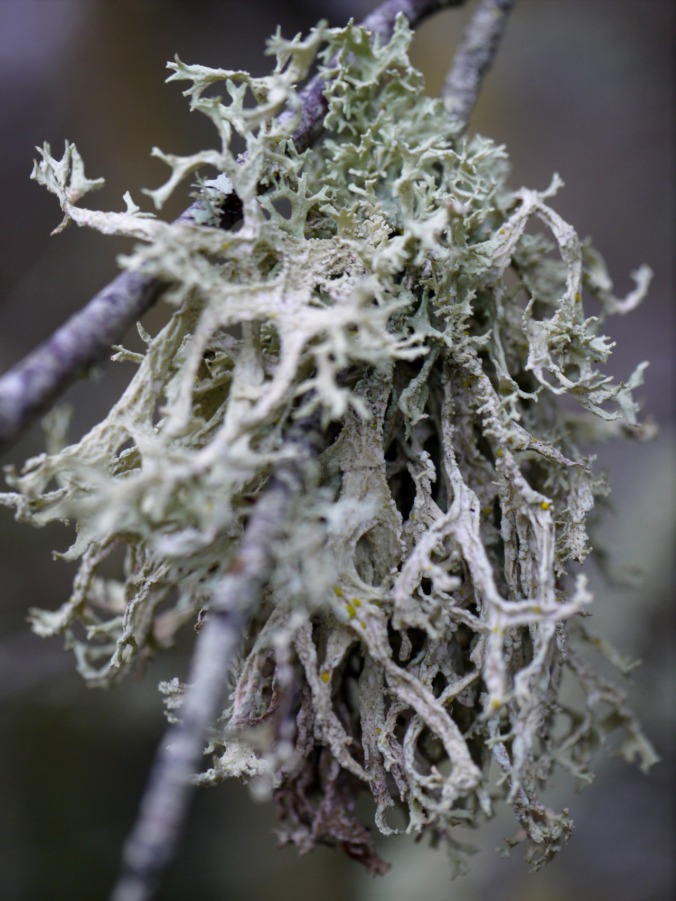Niebla spp. “Fog Lichen”
Mt. Tamalpais State Park, Marin County, CA
December 29, 2015
Robert Niese
So far in my brief foray into lichenology, I have yet to encounter a fungus so hotly debated as the “Niebla” fog lichens (members of a complex of “Ramalina-like” maritime lichens). Rather than venture an opinion as to the identity of these species (or just one species?), I’ll just leave the name at the genus level (although even THAT is debatable). For those of you interested, various parties claim everything from 1 to 42 to 100s of species of Niebla occur on Pacific Coasts of North America. Most agree, however, that diversity is much lower north of Baja California and the Channel Islands, and that the PNW is only home to one (N. cephalota) or, at most, three species. Although some sources state that no species occur north of Humboldt County, CA…






